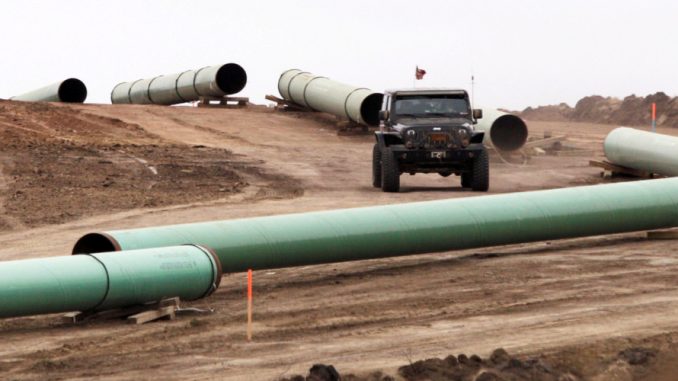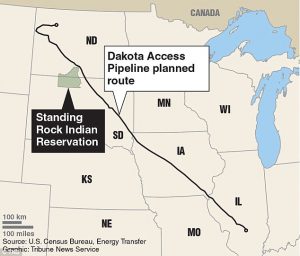
The Dakota Access pipeline is already leaking and proving its detractors correct, with two leaks reported in March, amounting to over 100 gallons of crude oil.
The notorious $3.8bn pipeline is being prepared for operation and has already leaked 84 gallons of oil in South Dakota on April 4, bringing the total leaks in 2017 to three.

BYPASS THE CENSORS
Sign up to get unfiltered news delivered straight to your inbox.
You can unsubscribe any time. By subscribing you agree to our Terms of Use
Latest Video
Water protectors have long argued that the Dakota Access pipeline is an environmental hazard and an affront to Native American heritage.
In December 2016 more than 176,000 gallons of crude oil was leaked from the Belle Fourche Pipeline into the Ash Coulee Creek, ND, 150 miles from Dakota Access main protest camp in Cannon Ball.
The Guardian reports:
Two barrels, or 84 gallons (320 liters), spilled due to a leaky flange at a pipeline terminal in Watford City on 3 March, according to the state’s health department. A flange is the section connecting two sections of pipeline. Oil flow was immediately cut off and the spill was contained on-site. Contaminated snow and soil were removed. No people, wildlife or waterways were affected, according to the department’s environmental health database.
The leak was on a line operated by a connecting shipper on the Dakota Access pipeline, said Vicki Granado, spokeswoman for Texas-based Dakota Access developer Energy Transfer Partners.
“They are responsible for the operations, maintenance, etc,” she said.
A leak of half a barrel, or 20 gallons (75 liters), occurred 5 March in rural Mercer County, data from the federal Pipeline and Hazardous Materials Safety Administration show. Contaminated soil was removed, and no waterways were affected. There were no reported injuries to people or wildlife. The administration is part of the Department of Transportation.
The online report says an above-ground valve failed due to a manufacturing defect, causing the leak. Upstream and downstream valves were closed to isolate the leak. Later, all other such valves in the Dakota Access system were inspected and found to be OK.
The federal database shows no leaks along the pipeline in Iowa or Illinois.
ETP maintains the pipeline is safe, but several tribes in the Dakotas – including the Cheyenne River, Standing Rock, Yankton and Oglala Sioux – fear environmental harm and are fighting in federal court, hoping to convince a judge to shut down the line.
The Dakota Access pipeline will move North Dakota oil 1,200 miles (1,930 kilometers) through South Dakota and Iowa to a distribution point in Illinois. ETP plans to begin commercial operations 1 June.
North Dakota environmental health chief Dave Glatt said the health department lists such incidents in its online database, but typically doesn’t otherwise notify the public of oil spills smaller than 150 barrels unless the oil contaminates water.
The pipeline leaked 84 gallons of oil in South Dakota on 4 April. That spill at a rural pump station also was quickly cleaned up and didn’t threaten any waterways. The state’s department of environment and natural resources posted a report in its online database but didn’t otherwise notify the public. Its policy is to not issue news releases on spills unless there is a threat to public health or water.
Tribal leaders and attorneys say the leaks bolster their demands for further environmental review of the pipeline.
“We have always said it is not a matter of if, but when,” tribal attorney Jan Hasselman said after the South Dakota leak. “Pipelines spill and leak. It’s just a fact.”


